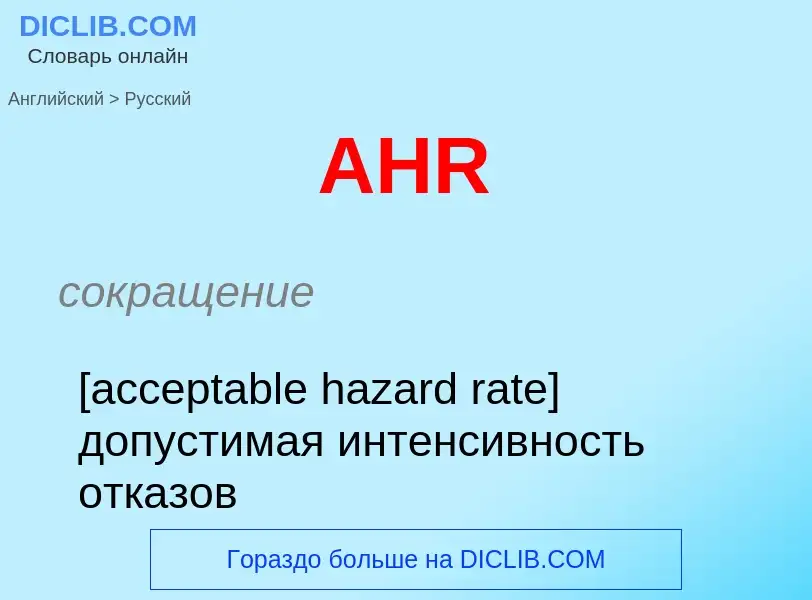Translation and analysis of words by ChatGPT artificial intelligence
On this page you can get a detailed analysis of a word or phrase, produced by the best artificial intelligence technology to date:
- how the word is used
- frequency of use
- it is used more often in oral or written speech
- word translation options
- usage examples (several phrases with translation)
- etymology
AHR - translation to russian
сокращение
[acceptable hazard rate] допустимая интенсивность отказов
существительное
общая лексика
американское общество инженеров по отоплению, охлаждению и кондиционированию воздуха
синоним
общая лексика
нитекс (мембранный фильтр для стерилизации сред)
Wikipedia
The aryl hydrocarbon receptor (also known as AhR, AHR, ahr, ahR, AH receptor, or dioxin receptor) is a protein that in humans is encoded by the AHR gene. The aryl hydrocarbon receptor is a transcription factor that regulates gene expression. It was originally thought to function primarily as a sensor of xenobiotic chemicals and also as the regulator of enzymes such as cytochrome P450s that metabolize these chemicals. The most notable of these xenobiotic chemicals are aromatic (aryl) hydrocarbons from which the receptor derives its name.
More recently, it has been discovered that AhR is activated (or deactivated) by a number of endogenous indole derivatives such as kynurenine. In addition to regulating metabolism enzymes, the AhR has roles in regulating immunity, stem cell maintenance, and cellular differentiation.
The aryl hydrocarbon receptor is a member of the family of basic helix-loop-helix transcription factors. AHR binds several exogenous ligands such as natural plant flavonoids, polyphenolics and indoles, as well as synthetic polycyclic aromatic hydrocarbons and dioxin-like compounds. AhR is a cytosolic transcription factor that is normally inactive, bound to several co-chaperones. Upon ligand binding to chemicals such as 2,3,7,8-tetrachlorodibenzo-p-dioxin (TCDD), the chaperones dissociate resulting in AhR translocating into the nucleus and dimerizing with ARNT (AhR nuclear translocator), leading to changes in gene transcription.


